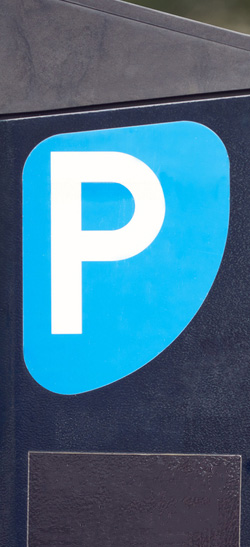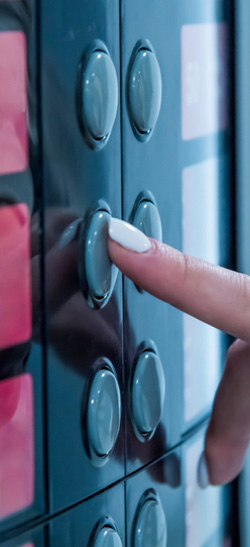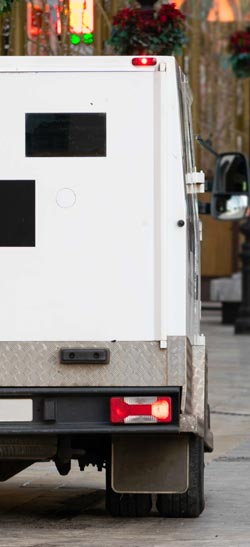Introduction
In a remarkable turnaround driven by a change in consumer behaviour, 2024 looks like the year that organisations will be looking to blend physical cash acceptance with smart digital technology. This is a far cry from the post-Covid-19 pandemic when the world thought cash was literally to be avoided like the plague.
In this article, we explore the reasons for the resurgence in the popularity of cash and what this means for organisations that accept cash and those who may be considering it. We will look at some of the trends in the combined use of physical cash and the smart digital technology that can be used to optimize cash handling in 2024.
1. The current state of physical cash in business.
UK retail sales are down, but physical cash is on the increase as shown in recently released figures.
In December 2023 the UK retail sector showed a notable downturn. It marks the most significant decrease in retail sales volumes since January 2021. According to 365Retail, The Office of National Statistics (ONS) reported that retail sales volumes saw a decrease of 3.2% contrasting the 1.4% increase in November. This demonstrates a shift in consumer shopping habits, with many opting to complete their Christmas shopping early.
However, there is a silver lining of growth for physical cash after decades of decline. This is due in part to cash-conscious consumers who are turning to cash to budget better in the cost-of-living crisis.
According to the 2023 Payments Survey by the British Retail Consortium, cash usage has grown for the first time in a decade with households looking to balance their budgets.
The trend has continued. In January 2024 the Nationwide Building Society revealed that around 31.4 million cash withdrawals were made from its network of more than 1,200 ATMs in 2023 – a four percent increase on 2022.
Across the UK, coins and banknotes accounted for nearly a fifth (19%) of transactions in 2022, up from 15% in 2021. This change is also reflected in businesses such as retailers, banks, and casinos where the purchase of smart safe cash management systems is on the increase.
Any business that has touchpoints with physical cash should now consider how its management now factors into their organization. As part of this, new digital technology and processes can give it a facelift fit for the 21st century.
For example, if we look at smart safe cash management systems, the market size was valued at USD$3.2 billion in 2023, with a projection to reach over USD$5 billion by 2030. A smart safe cash management system (link to blog on Smart Safes), which includes equipment and software, means businesses can monitor cash at every point in cash handling processes.
The adaptability to offer both cash and electronic payments in this evolving landscape is also key – but many companies may be wary of the costs associated with cash payments. These can include, but are not limited to, transportation, counting machines and security measures.
However, cost savings can be realised through outsourcing cash handling services and reducing the need for in-house resources.
Cash Flash
Physical cash is universally accepted and doesn’t rely on technological infrastructure. However, combining it with SaaS tools allows for unified transactions management.
2. Emerging trends in smart digital technology
Advanced technologies like the Internet of Things (IoT), artificial intelligence (AI) and blockchain have remodelled payment processing, propelling physical cash processes forward.
IOT devices are allowing real-time monitoring of cash flows, improved traceability and providing valuable insights into the status of physical assets.
Cash management specialists such as PayComplete offer an adaptable set of SaaS and machine software, intelligent devices, and professional, technical, and merchant services, all via a smart IOT platform. Additionally, AI is now integral to automating cash handling operations with intelligent algorithms employed to optimize processes and minimize errors.
As these technologies converge, physical cash processes will result in a more interconnected future – and drastically reduced costs of cash acceptance.
3. Integration of physical cash with digital solutions
This advancement in technology also means physical cash acceptance can now be optimized in a similar way to electronic payments. Smart digital solutions now allow businesses to transform the efficiency of cash transactions comparable to digital counterparts.
If we take an example using smart cash handling devices. These are equipped with technologies like optical character recognition (OCR) and machine learning, enabling business to automate the counting and validation of banknotes, reducing human errors and transaction times. Furthermore, integrated software solutions complimenting the hardware allow for seamless reconciliation with other payment methods.
The integration of technology and physical cash acceptance not only boosts operational efficiency but also offers a pathway to the frictionless integration of diverse payment options.
The ideal future scenario is that all payment methods, including physical cash, will run side by side. This will be delivered via one holistic solution that gives businesses full performance visibility across their entire cash estate.
Cash Flash
Cash is an inclusive currency form. It is accessible to everyone across diverse socioeconomic backgrounds, including those individuals without access to digital banking.
4. The security impact for business operations
Security measures have increased for digital payment methods and there are equally growing measures that leverage digital technology to improve tracking and monitoring of physical cash within business operations.
The banking sector is a real-world example of an industry that has adopted integrated physical cash handing strategies with digital tools. They have embraced smart safes and cash management systems to enhance the security and efficiency of handling cash.
An example: The bank and physical cash
A well-known bank switched its existing safe hardware to smart safes, equipped with advanced features such as biometric authentication, counterfeit detection, and connectivity to digital networks to securely deposit and manage cash.
These safes integrated with digital tools and software enabled armored car services and bank staff to use digital platforms to perform remote real-time monitoring and tracking of cash transactions.
As a result, the cash was handled more securely during deposits and withdrawals. Moreover, the integration of digital tools offered better tracking of cash flow, reduced the risk of errors, and improved overall accountability.
The bank was able to leverage analytics and reports to gain further insights into cash usage patterns, helping them make better decisions about cash distribution and logistics.
This example demonstrates how the integration of physical cash handling strategies with digital tools can lead to improved security, efficiency, and transparency in managing physical currency.
Cash Flash
Physically holding money in your hand creates a sense of ownership and financial awareness, making it easier for individuals to manage their spending and budget effectively.
5. Challenges and considerations
Regulatory considerations and compliance are front and centre for physical cash in 2024.
For example, under the Financial Services and Markets Act 2023, the UK government has tasked the Financial Conduct Authority (FCA) with ensuring that customers have “reasonable access” to free cash and deposit withdrawal facilities. The FCA is currently in consultation on this with new rules expected to be in place by summer 2024. This is an important regulation that supports and protects the resurgence of cash in the UK. Businesses need to be considering a change in plans and processes in readiness for their implementation.
There may be potential resistance and challenges in changing the mindset towards adoption of digital technologies around existing physical cash hardware, but the continued use of physical cash presents positive dimensions. This includes acknowledging its significance for individuals with limited access to digital technologies and are therefore reliant on physical cash.
Cultivating change in cash management
Co-President of PayComplete, Simon James, says, “Cash is still the most frequently used means of payment at point of sale. Although its use in the euro area has declined, according to a March 2023 study by the European Central Bank.
However, the recent rise in cash usage in UK for the first time in decades shows that the future of physical cash appears to be a dynamic coexistence with digital alternatives. Today, cash acceptance is much more achievable when implemented in parallel with smart technology. This will ultimately create a hybrid payment ecosystem that works for all corners of society and business.”
Regulation is also dictating the need for businesses to offer access to physical cash in a bid to better serve individuals that are financially excluded. Therefore, the hybrid approach acknowledges the recent resurgence of physical cash whilst recognising the favouring of digital transactions.
Enhanced security measures and further integration of smart safes and biometric authentication are likely to contribute to the resilience and efficiency of cash in the future.
Conclusion
The past two years have been surprising times that are causing many organisations to take a fresh look at cash. With its increasing use in the UK, cash can no longer be seen as a rapidly diminishing force. Consumers are making their voices heard through their spending choices and habits.
Businesses have been embracing new technology like smart safe cash management systems to help them manage cash. But the real opportunity for organizations that accept cash is to use those systems in parallel with new technology.
Technologies such as IoT, AI and blockchain are facilitating real-time monitoring and operational efficiency. The integration of physical cash with digital solutions, exemplified by smart cash handling devices opens the path for seamless transaction. However, challenges include regulatory considerations demanding businesses adapt their plans.
The coexistence of physical cash and digital options signposts to fostering a hybrid payment system. This interesting shift, as noted by PayComplete’s Co-President Simon James, signifies a significant change in the future of cash handling in 2024.












